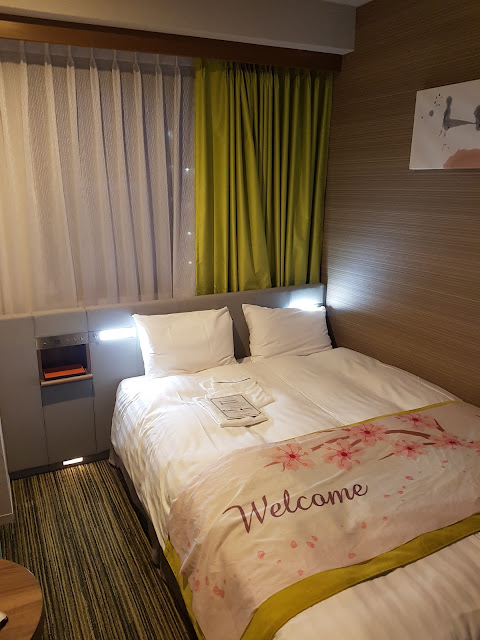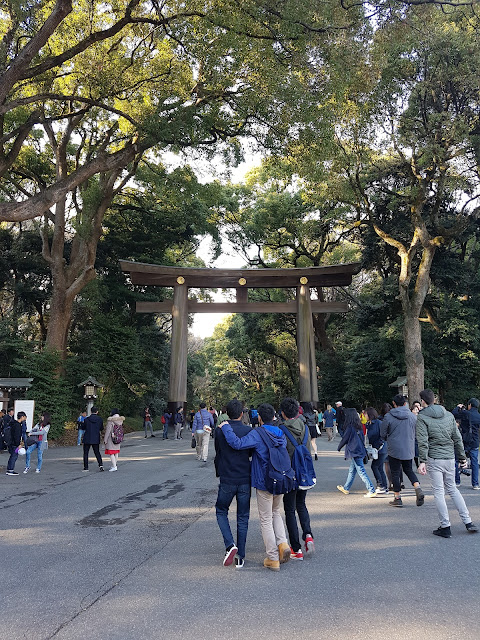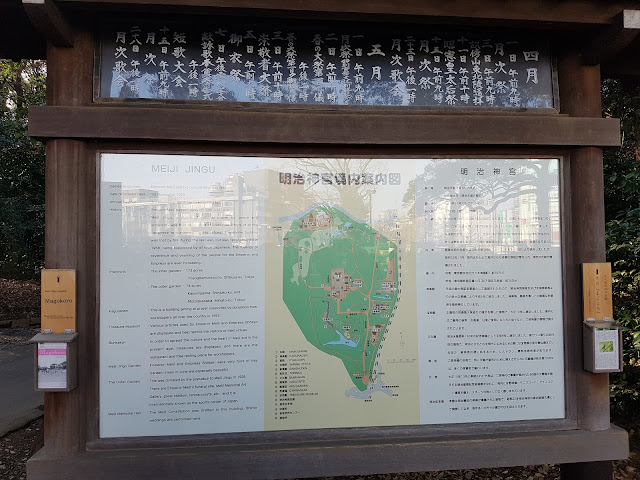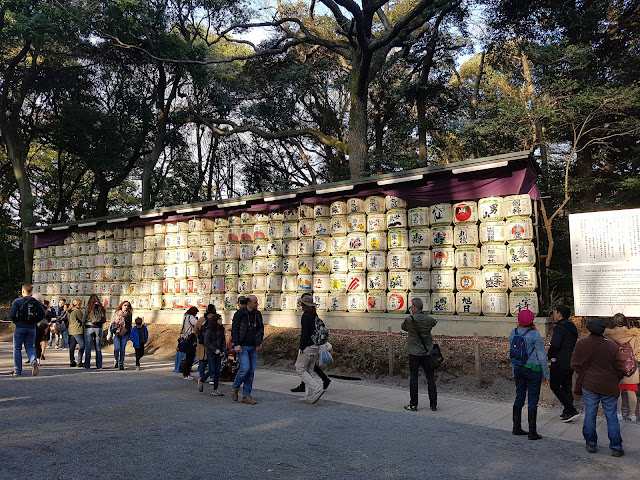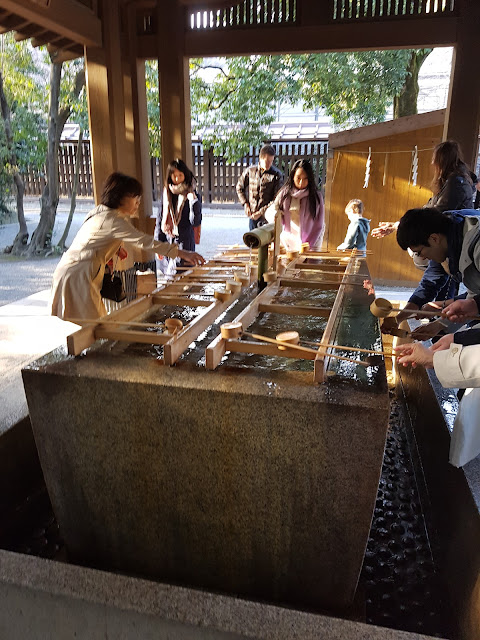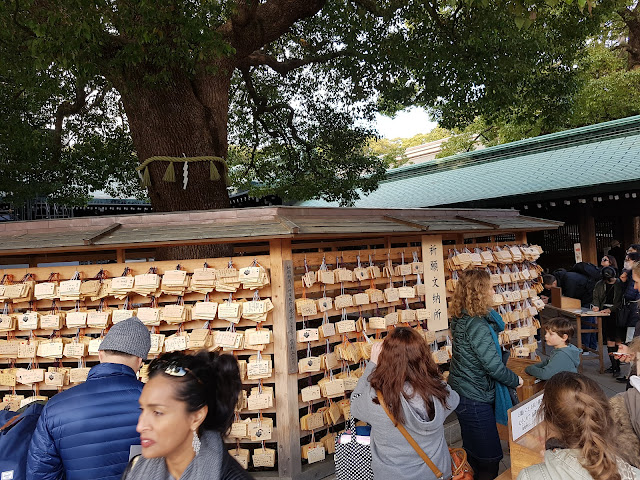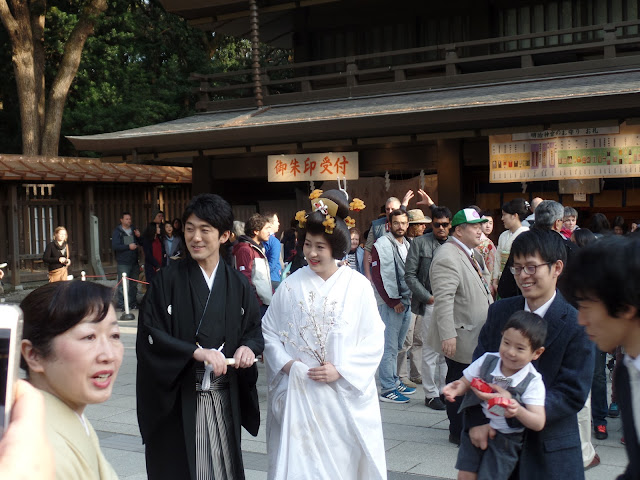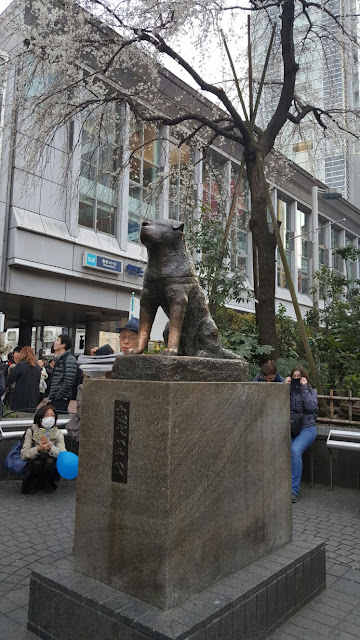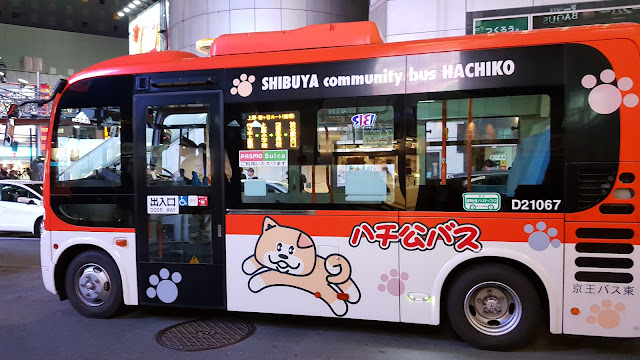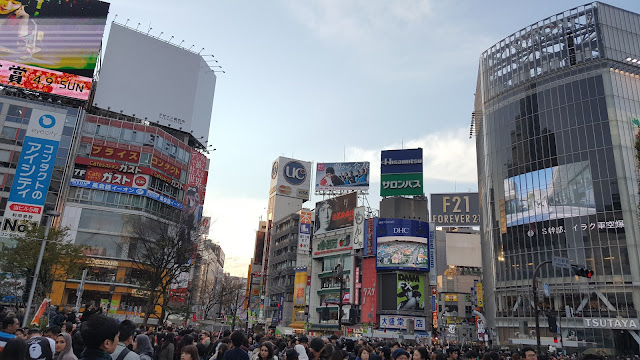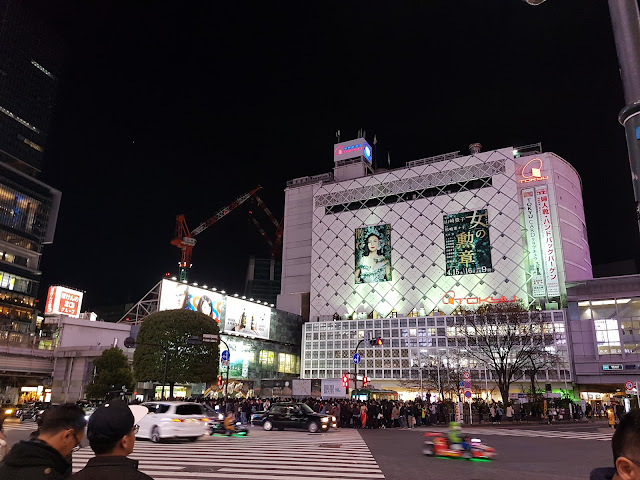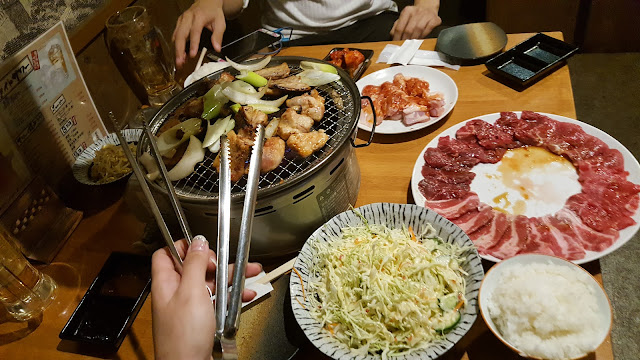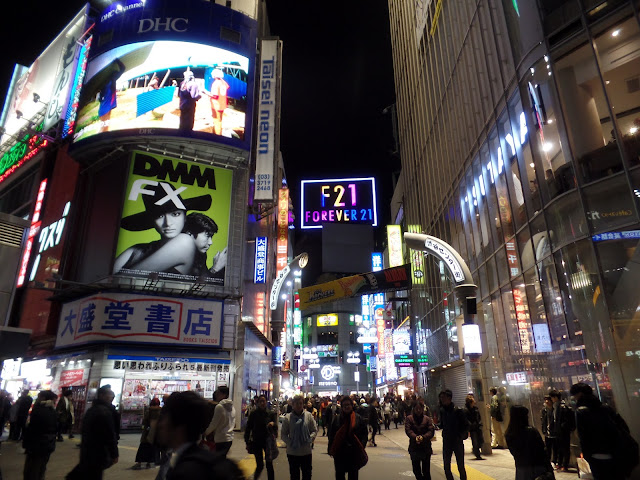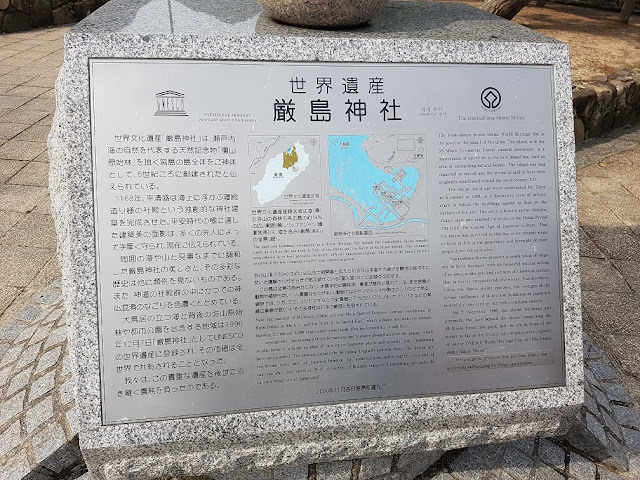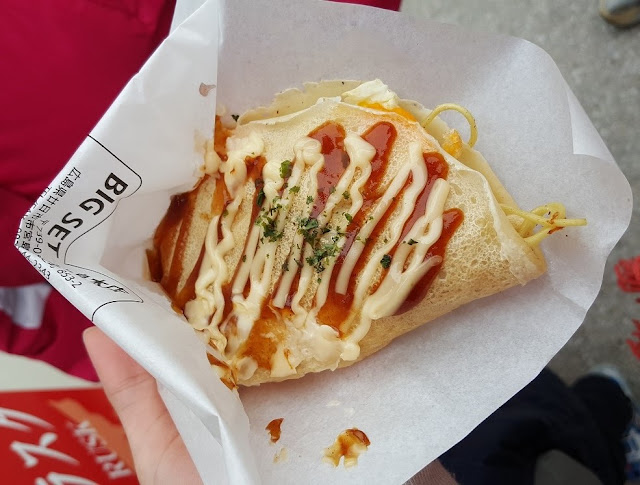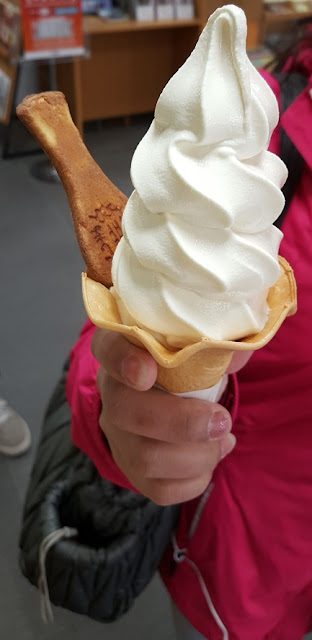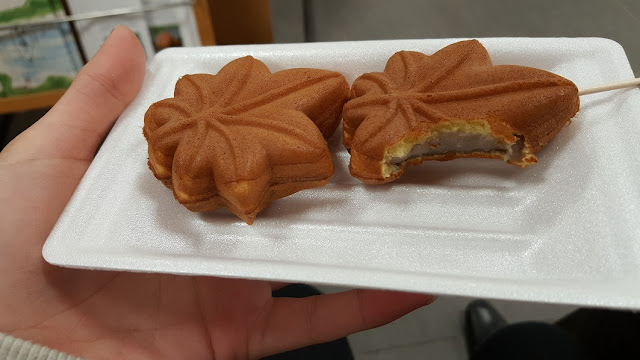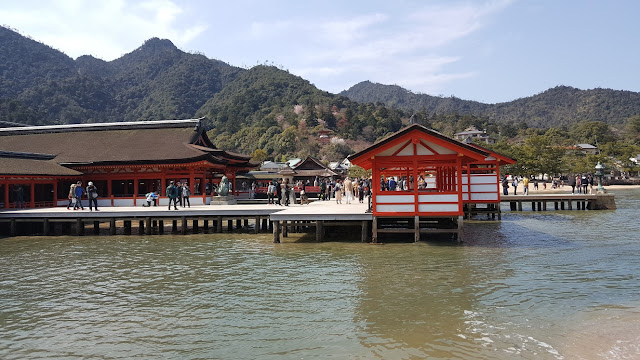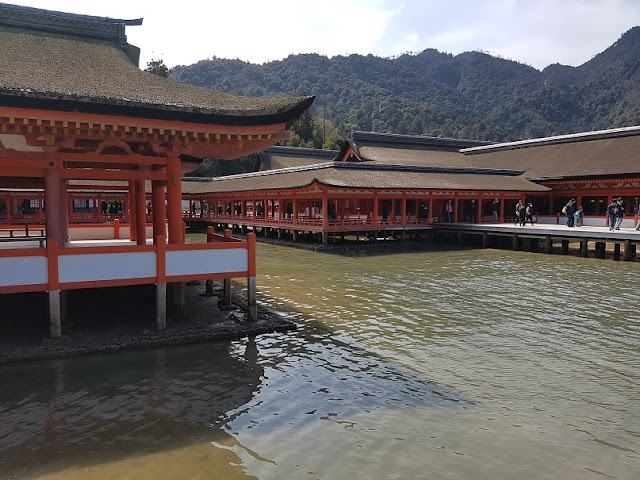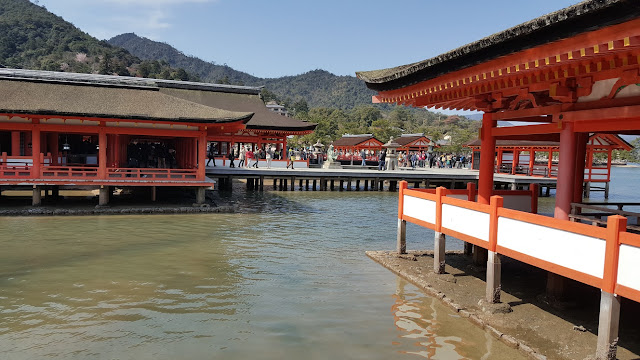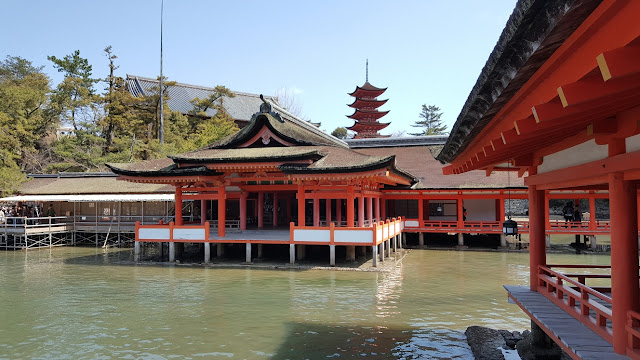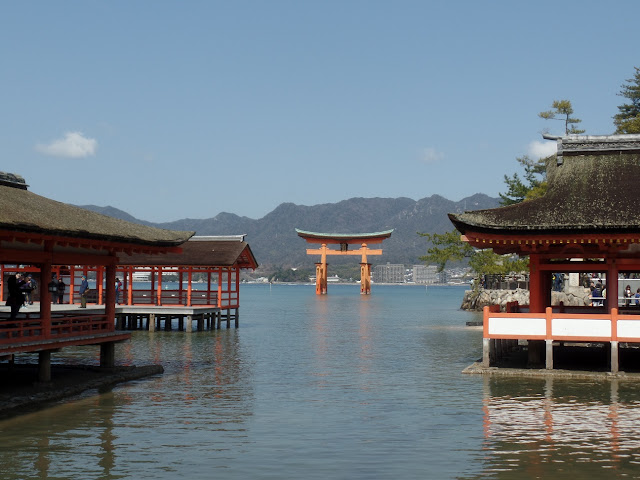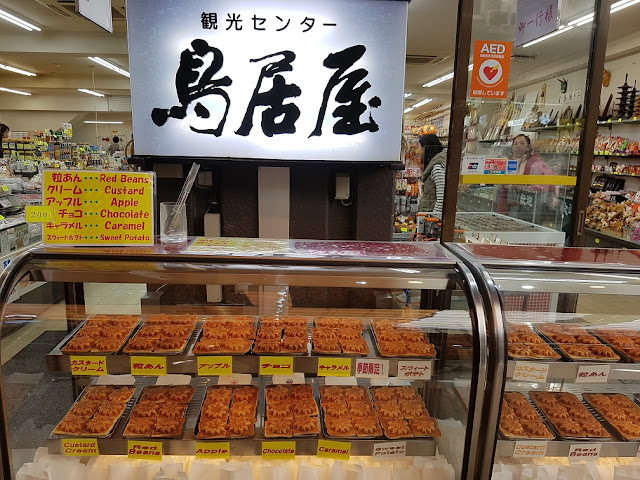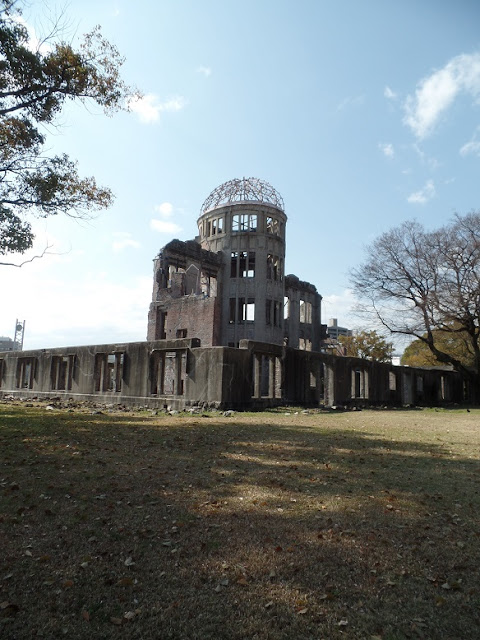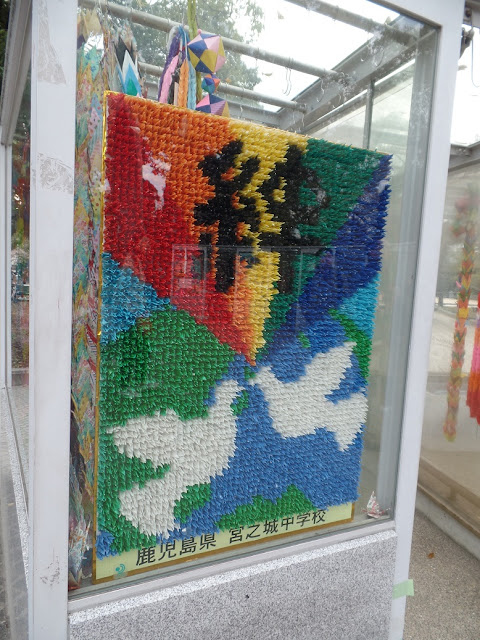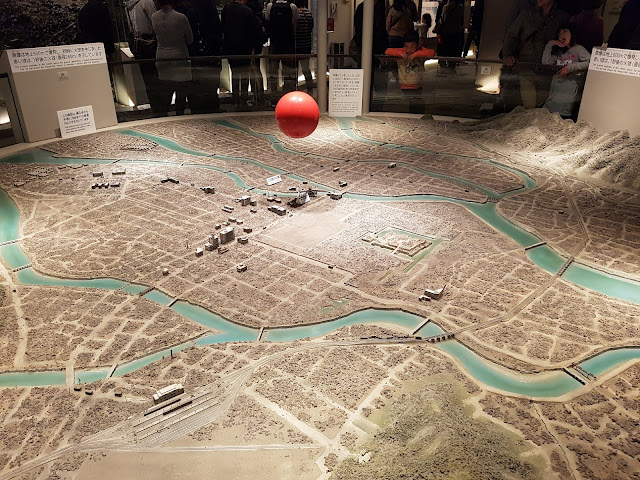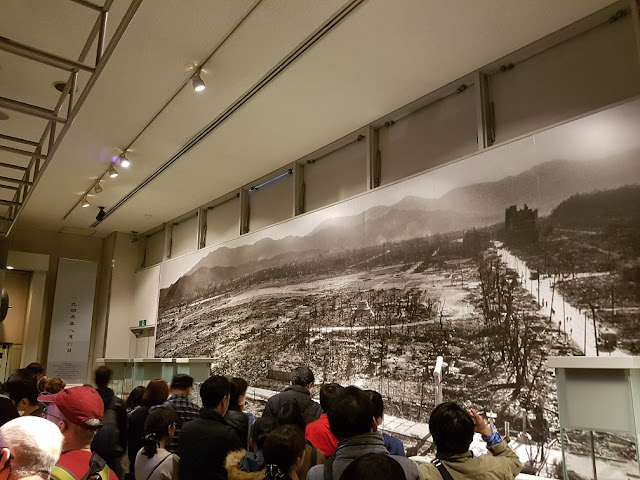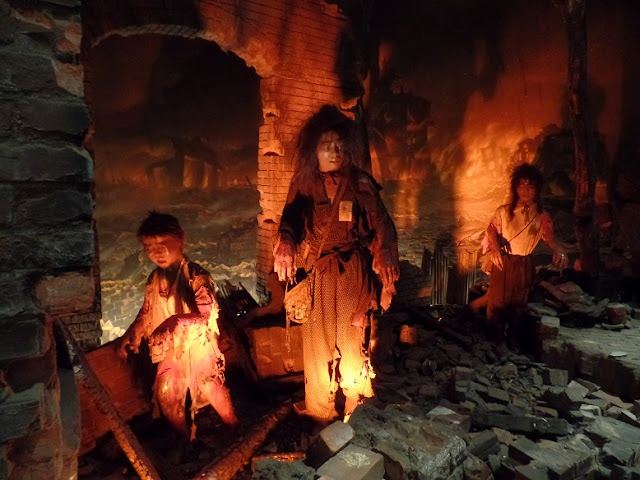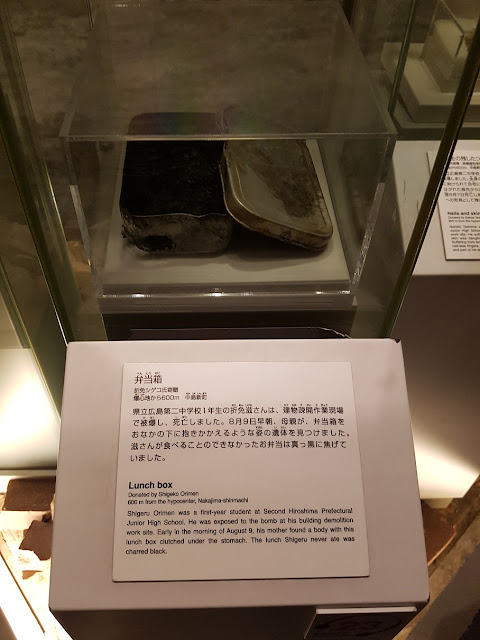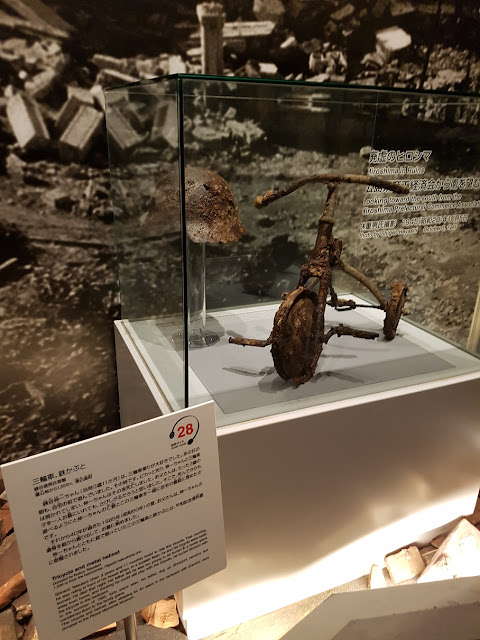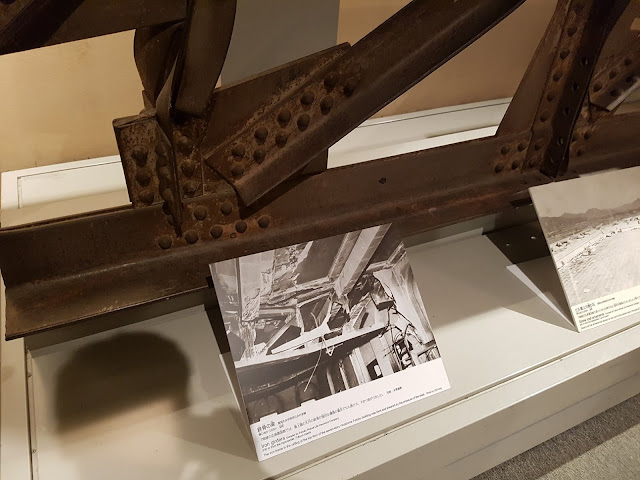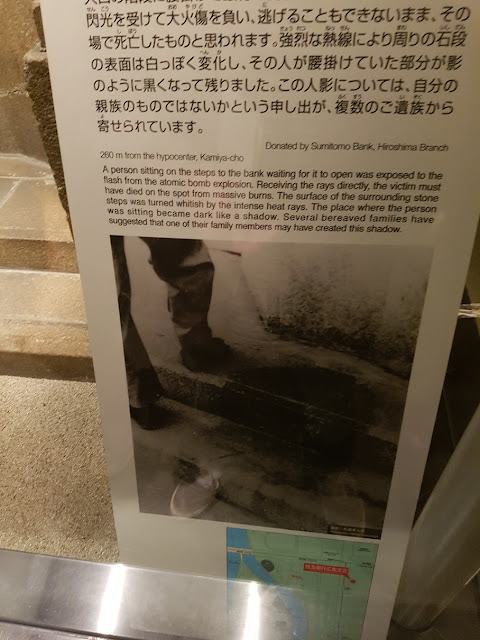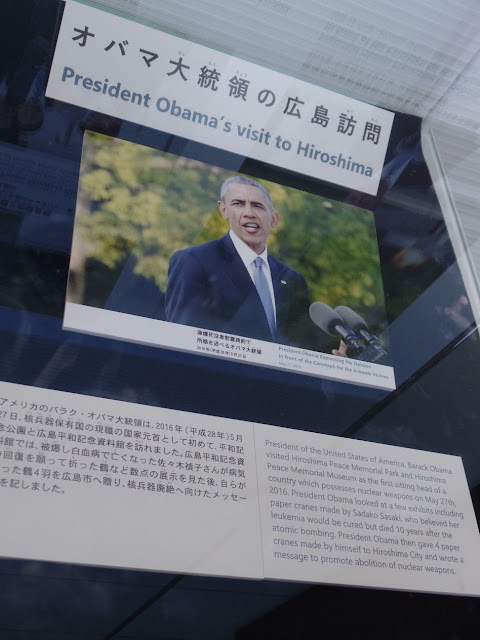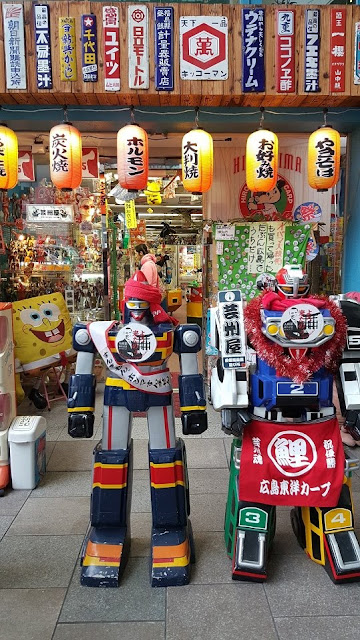Hiroshima (広島市) is the largest city in the Chugoku region of western Honshu. It is better known to the world as the city which the first nuclear weapon (Little Boy) was detonated in warfare, towards the end of World War II. Because of the atomic bomb explosion more than 70 years ago, there's a misconception among many that it is not safe to visit Hiroshima because of the residual radiation. This understanding is incorrect, as based on official report, the background radiation in Hiroshima and Nagasaki today is the same as the average amount of natural radiation present anywhere on Earth. This is different as compared to the Chernobyl and Fukushima nuclear reactor disaster. This is because the amount of nuclear fuel and reaction efficiency in the atomic bombing is much lesser as compared to the nuclear reactors leak. In addition, the atomic bomb exploded in mid-air, which the radiation was quickly dispersed by wind and rain. In short, it is safe to visit and live in Hiroshima today.
We woke up fresh in morning at our Airbnb, fully re-charged from the tiring travelling the day before from Osaka. Our Airbnb is a Ryokan-styled apartment, with traditional Japanese/modern blend of decorations and tatami-matted rooms. It was a rare find in an urban city like Hiroshima and it was one of the main reason why we had chosen this apartment, with other advantages such as being close by to the public transportation and major attractions.
 |
| Our Airbnb apartment (Source: Photo from Airbnb.com) |
Miyajima (宮島)
We kicked off the day with a visit to
Miyajima (宮島), an island located in the south-west direction from the Hiroshima city centre. It is most famous for the Giant Torii Gate on water, Itsukushima Shrine (厳島神社) and the free roaming Sika deer. We had some simple breakfast at the convenience shop near our Airbnb, before we took the tram from Honkawa-cho Hiroden Station (本川町) to Nishi-Hiroshima Hiroden Station (西広島駅).
 |
| Honkawa-cho Hiroden Station |
Riding the tram was an unique and convenient way to move around the city. The Hiroshima tram had a long operational history since 1910, but the current tram design is modern and spacious.
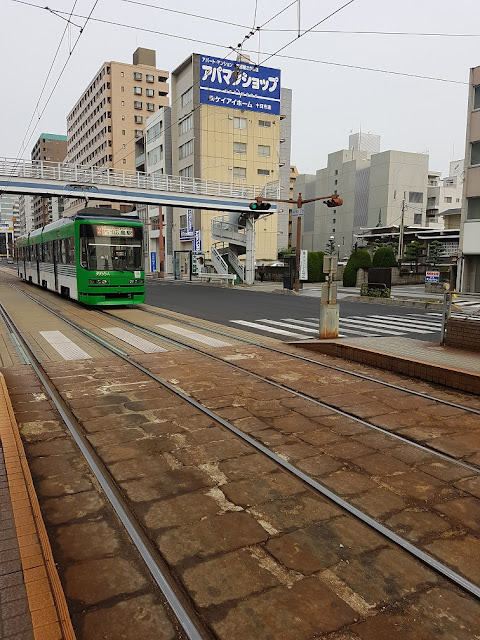 |
| Tram arriving the station |
 |
| Interior of tram |
After reaching the Nishi-Hiroshima Hiroden Station (西広島駅), we interchanged at the JR station and took the JR Sanyo Line to Miyajimaguchi JR Station (宮島口駅).
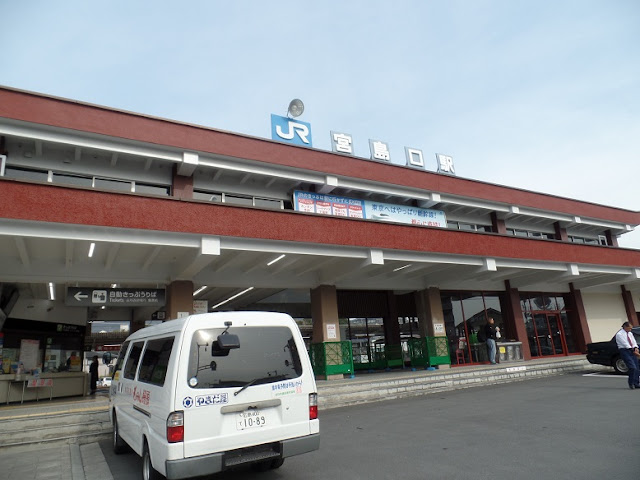 |
| Miyajimaguchi JR Station |
After arriving Miyajimaguchi JR Station (宮島口駅), it was another short 5 minutes walk towards the Miyajimaguchi Ferry Terminal to take the ferry to the island. There are 2 ferry operators at the terminal, JR West Miyajima Ferry and Matsudai Kisen Ferry. We waited for the JR West Miyajima Ferry since we were holding the
JR Pass and the ferry ticket is covered by the JR Pass.
 |
| JR West Miyajima Ferry |
After walking through the shopping street, we finally arrived at the photo taking spot of the Giant Torii Gate, which is ranked as the best scenic place in Japan. When we were there, it was high tide and the Giant Torii Gate seems to be 'floating" on the water.
 |
| Giant Torii Gate on water |
During the low tide, visitors could actually walk to the gate. Over here it was crowded with people, not just to catch the best view of Giant Torii Gate, but also to take photos of the many free roaming Sika deer around us.
 |
| Free roaming Sika deer |
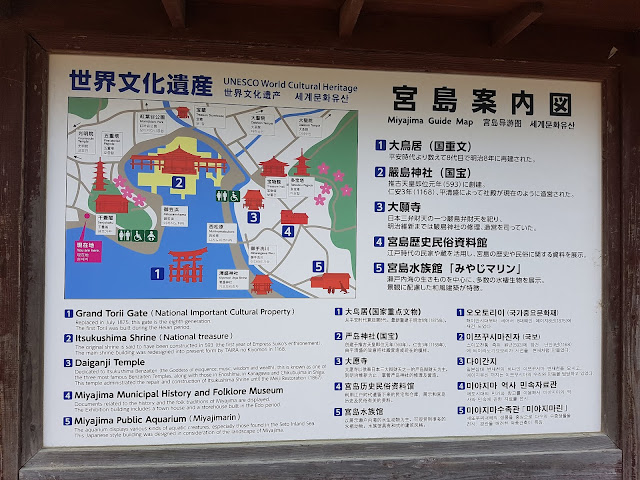 |
| Miyajima Guide Map |
Itsukushima Shrine (厳島神社)
Next, we bought the entrance tickets and headed into the
Itsukushima Shrine (厳島神社). The shrine complex is an UNESCO World Heritage Site, dedicated to three daughters of Susano-o no Mikoto, Shinto God of Seas and Storms, and brother of Sun Goddess. It was first built in the 6th century, but over the years, it was destroyed and re-built many times, with the present shrine dated to the mid-16th century.
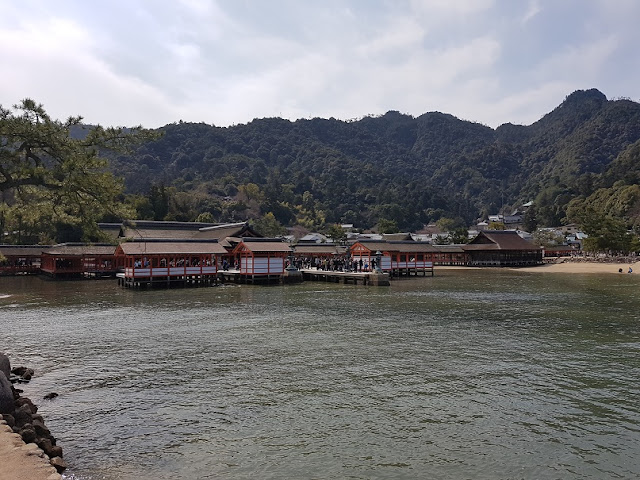 |
| Overview of Itsukushima Shrine |
 |
| Entrance tickets |
Others were distracted along the way to buy various souvenirs and loads of Momiji Manju to bring back to Singapore. Along the way, we also saw a giant wooden rice scoop on display, which is said to be the largest wooden rice scoop in the world. It was constructed in 1996 to commemorate the designation of Itsukushima Shrine (厳島神社) as an UNESCO World Heritage Site. In many of the souvenir shops, we could also find many wooden rice spoons on sale, which is said to be able to bring good luck.
 |
| Giant Wooden Rice Scoop |
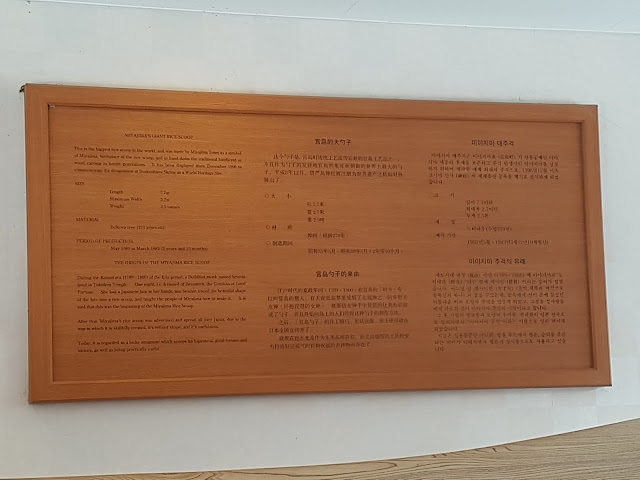 |
| Introduction to the Giant Wooden Rice Scoop |
Lunch @ Tachibana (たち花)
After the tiring shopping, we settled down at a restaurant called Tachibana (たち花) for our lunch. As we were a big group, we were given a long table with tatami seating. The environment was cozy and staff were friendly. There was English menu, so it was easy for us to order the food, which were reasonably priced as well. Most of us ordered the Pork Katsu Curry Rice and Oyakodon.
 |
| Our lunch sets at Tachibana |
After the meal, we went straight to the ferry terminal and departed Miyajima (宮島). By doing the reverse way on how came to Miyajima (宮島), we went back to our Airbnb apartment in Hiroshima city centre to deposit the souvenirs that we had bought and took a short rest.
Atomic Bomb Dome (原爆ドーム)
After the short recharge, we walked from our Airbnb apartment around 15 minutes to the
Atomic Bomb Dome (原爆ドーム), which is another UNESCO World Heritage Site, and together with the nearby Hiroshima Peace Memorial Park (広島平和記念公園), is a must-visit place in Hiroshima.
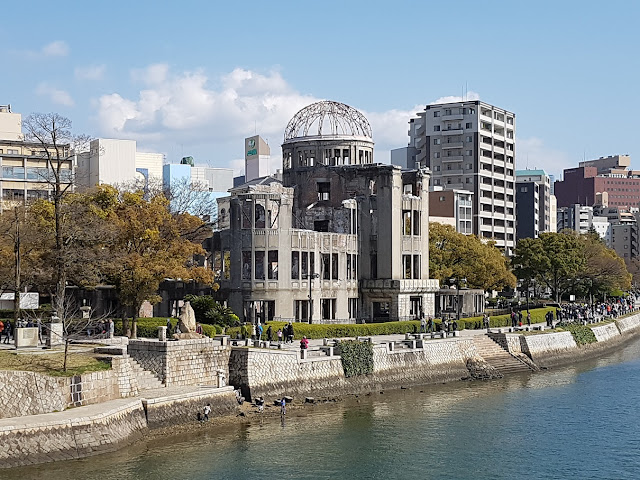 |
| Atomic Bomb Dome |
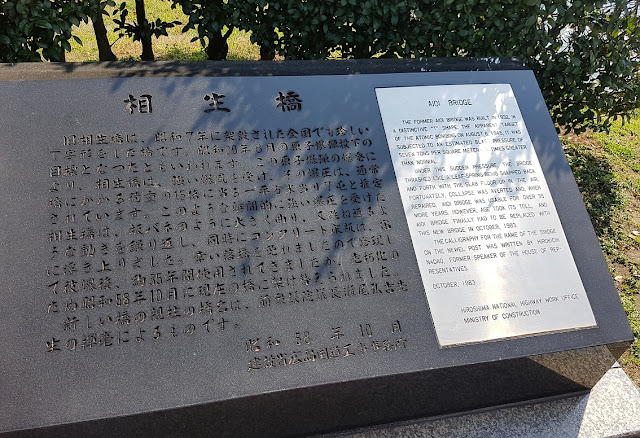 |
| Aioi Bridge, the apparent target of the Atomic Bomb |
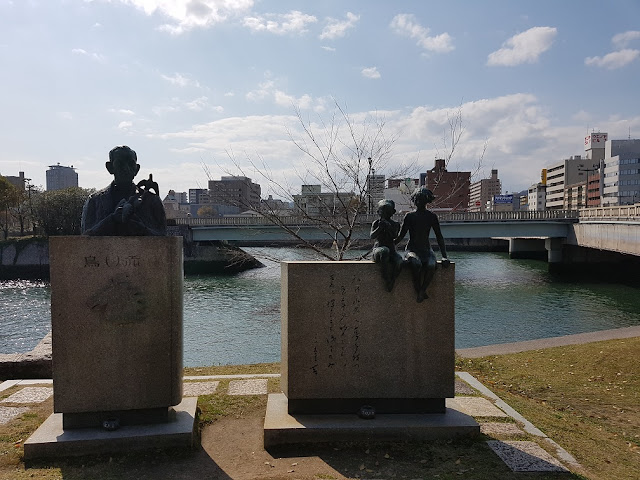 |
| Red Bird Monument by the river bank |
 |
| Introduction to the Red Bird Monument |
The building, which is now a ruin, serves as a memorial to the people killed during the atomic bombing of Hiroshima on 6 August 1945. The building was located very near to the bomb's hypocenter (just 160m away) and it was the only structure left standing in the nearby vicinity. Before the bombing, the building was known as The Hiroshima Prefecture Commercial Exhibition Hall, with a distinctive dome structure at the top. During bomb explosion, the building's vertical columns were able to resist the blast and parts of the concrete and brink outer walls remain intact, as seen today.
 |
| Remains of the Atomic Bomb Dome |
 |
| Information on the Atomic Bomb Dome |
 |
| UNESCO World Heritage Site inscription |
Visitors are not able to go near to the building, as the area is barricaded. We walked around the building, occasionally stopped to view the many information boards along the way, which introduced the history of the building. There were many visitors there and I could feel the sombre ambience among them.
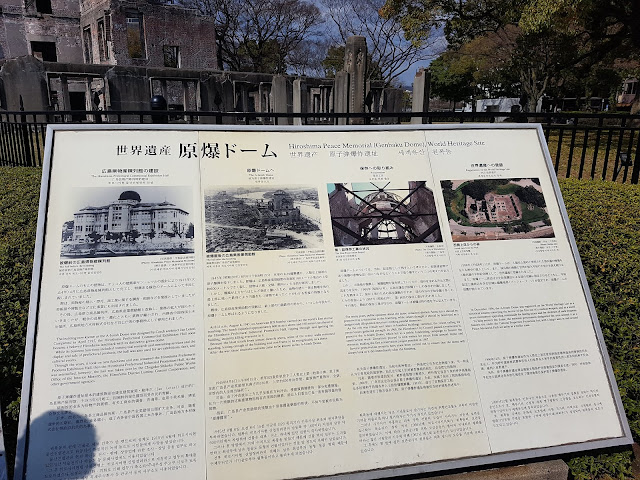 |
| History of the Atomic Bomb Dome |
Hiroshima Peace Memorial Park (広島平和記念公園)
Next, we crossed the bridge and headed towards the
Hiroshima Peace Memorial Park (広島平和記念公園), which is a large park dedicated to the legacy of Hiroshima as the first city in the world to suffer a nuclear attack and many victims of the bombing.
 |
| Fuel Hall, one of the building within the park location that survived the atomic bombing |
There are a number landmarks in the park, such as the Rest House, Children's Peace Monument, Peace Bell, Atomic Bomb Memorial Mound, Pond of Peace, Flame of Peace, Memorial Cenotaph, Gates of Peace and the Hiroshima Peace Memorial Museum (広島平和記念資料館).
We first visited the Children's Peace Monument, which was built in memory of all children who died as a result of the Hiroshima atomic bombing.
 |
| Children's Peace Monument |
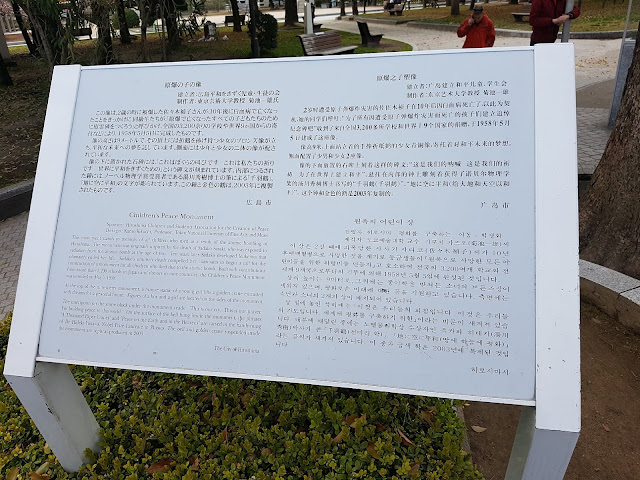 |
| Introduction of the Children's Peace Monument |
It was inspired by Sadako Sasaki, who was exposed to the atomic bombing radiation at the age of 2 years old and eventually died of leukemia. She believed that if she folded 1000 paper cranes, she could be cured. Beside the statue, we could see many paper cranes contributed by children from Japan and other countries, heeding the call in seek of world peace from the folding of the paper cranes.
 |
| Paper crane contributions from children of all parts of the world |
Next, we walked towards the center of the park, where the Pond of Peace, Flame of Peace and the Memorial Cenotaph are located. At the northern edge of the Pond of Peace is where the Flame of Peace is located, which the flame has burned continuously since it was lit in 1964 and will continue to remain lit until all nuclear weapons are removed from the planet.
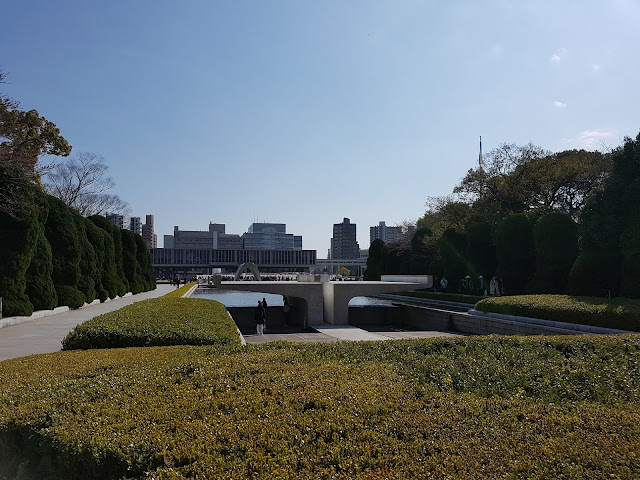 |
| Pond of Peace and Flame of Peace |
 |
| Introduction to the Pond of Peace and Flame of Peace |
The Memorial Cenotaph is a concrete monument that holds the names of all the people killed by the atomic bombing.
 |
| Memorial Cenotaph |
Hiroshima Peace Memorial Museum (広島平和記念資料館)
In my opinion, the most important landmark that visitors should visit in the Hiroshima Peace Memorial Park (広島平和記念公園) is the
Hiroshima Peace Memorial Museum (広島平和記念資料館). You cannot find another museum in the world (except for the counterpart Atomic Bomb Museum in Nagasaki) that covers the extent of the exhibits and information on the atomic bombing. The museum is split into 2 sections, the East Wing and West Wing. During our visit, the East Wing was closed for renovation, but some of the important information was displayed at the West Wing during the period.
 |
| Entering the museum |
 |
| Entrance ticket |
The atmosphere of the entire exhibition area was sombre, as we could see many elderly Japanese tearing when viewing the exhibits. At the end of the hall, there were exhibits featuring ex-US President Obama's visit to Hiroshima city on 27 May 2016.
 |
| Ex-US President Obama's visit to Hiroshima Memorial Peace Park |
 |
| Paper crane made by Obama |
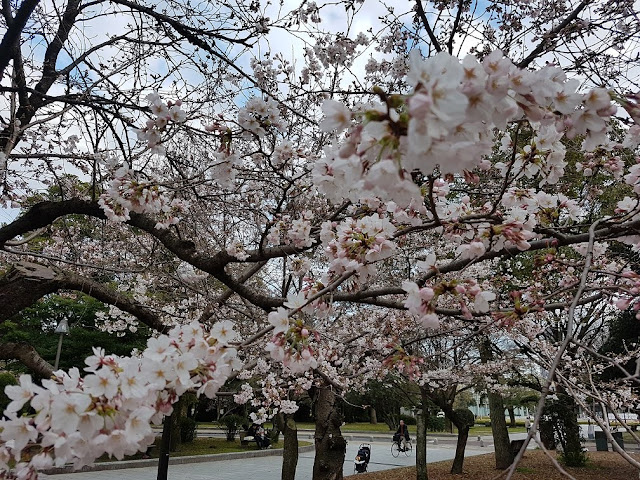 |
| Cherry blossom within the Hiroshima Peace Memorial Park |
Dinner @ Hondori Street (本通)
After our museum visit, we exited the Hiroshima Peace Memorial Park (広島平和記念公園) and headed east towards the Hondori Street (本通).
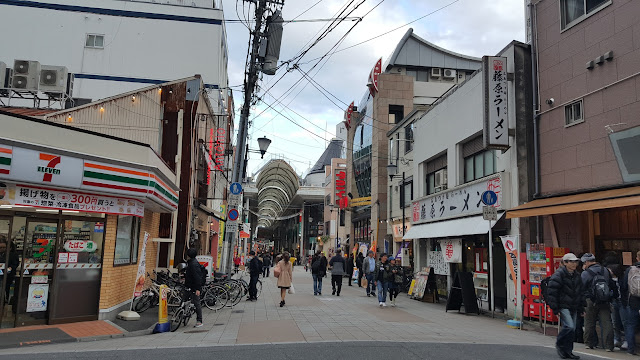 |
| Entering the Hondori Street |
This is the main shopping belt of Hiroshima, a covered shopping arcade, flanked by rows of shops, cafes, restaurants and departmental stores.
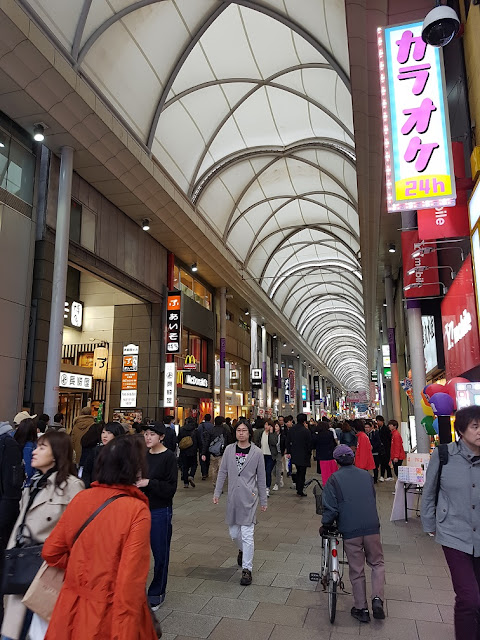 |
| Hondori Street |
As it was already close to dinner time, we headed to the Okonomi-mura (お好み村) located at the eastern end of the street, which is a 4 storey high building filled with numerous stalls selling the famous Okonomiyaki!
 |
| Okonomi-mura |
However, we were soon disappointed as after combing all the stalls in each level, all the stalls were either fully occupied or fully reserved. As we were a large group, it could take a long time to wait for the seats. We decided to look elsewhere for our dinner. Just as we exited the building, we saw some advertisements from the building next door (Okonomi Republic), where they have stalls selling Okonomiyaki too. We decided to pay a visit to the 3rd floor and were lucky to settle down at one of the stall, Teppan Guts.
 |
| English menu from Teppan Guts |
We were seated in front of the teppan where the chef started to prepare and cook our Okonomiyaki.
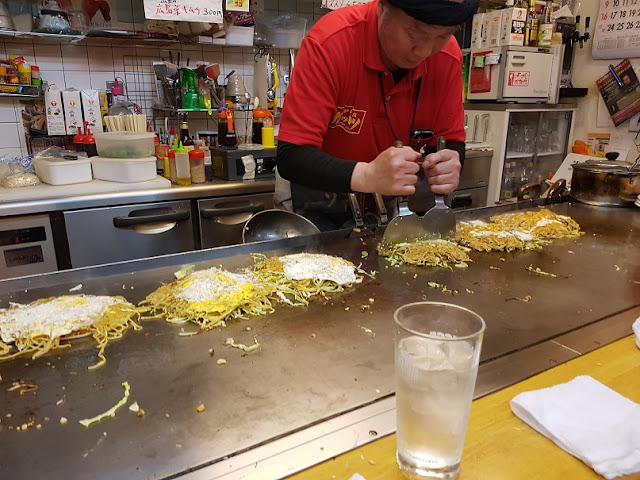 |
| Chef preparing our Okonomiyaki |
 |
| Final touch with the sauce |
After the long wait, the Okonomiyaki was finally served, which we immediately tucked in as we were already hungry.
 |
| Enjoying our Okonomiyaki |
The Okonomiyaki was delicious and inexpensive, which we counted ourselves lucky to have found this Okonomiyaki stall.
After the dinner, it was time to end the day, which we walked to the Hatchobori Hiroden Station and took the tram back to our Airbnb.

